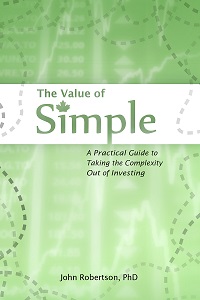Investing is Not the Biggest GHG in Your Life
September 13th, 2019 by PotatoIn the most recent Rational Reminder podcast, Tim Nash mentioned an infographic on CoPower’s page that makes the bold claim that your investment portfolio could be releasing much more greenhouse gas (GHG) emissions than any of your daily life activities, trying to make the case that sustainable investing is an important step.
The little factoid on investing being more carbon intensive than consumption choices didn’t sound right to me, so I followed the link to the CoPower infographic. And while I don’t have a hard mathematical proof, the thing doesn’t pass the sniff test for me.
They say that relatively modest investments (~$200k) lead to releasing more GHG every year than the activities of daily life. But many of those companies provide goods or services that consumers use, so my first skeptical thought was that they’re double-counting (if you count the total emissions of your investment in Maple Leaf foods and Suncor right up through the goods they deliver, then you shouldn’t also count your consumption of meat and gasoline personally), which isn’t a fair way to look at it. Who is more responsible for causing the emission to be generated, the investor or the consumer? There is a tiny bit of chicken-and-egg to it, but really, the investors do not stick around long after the consumers leave!
I tried following the links back to MSCI’s methodology to check, but that basically just says they take the direct and indirect emissions and weight it to the index. It does not state in the methods one way or the other whether they would be double-counting the GHG that would be attributed to the consumer in personal life choice calculators (or since they’re including indirect emissions for each company, if they’re double-counting emissions across companies — e.g. counting the indirect emissions of one company from power use, then also counting those emissions as direct emissions from the power company).
But you can get the fact sheets of indexes from S&P and do a bit of spot checking, as they report the carbon intensity, e.g. 208 T per $1M invested in the TSX Composite. With a market cap of ~$2.5T, that means Canada’s publicly traded companies are responsible for 524 MT of the country’s total 716 MT of emissions. That would be a “smoking gun” of double-counting if it were more than the national total, but 73% is still high enough that I’m confident this is not saying what CoPower is making it out to say. After all, that figure is not counting government emissions, foreign owned company activities, not-for-profits, private companies, or personal consumption. Yes, some of those TSX-owned emissions would be in other countries and not be a part of the Canadian total, but just looking at that I think it’s pretty clear that this is not an apples-to-apples comparison.
The figures on carbon intensity of investing are likely useful to compare investments relative to one another (e.g. if you want to invest in a low-carbon way), but I think CoPower is making a mistake directly comparing those figures to personal consumption choices — the figure of ~19 T of GHG per capita (or the 23 T for a couple that has already taken steps to reduce their emissions used as an example in the article) is already including much of the emissions of the companies you would invest in (otherwise, there’s only ~5.2 T/capita left to allocate after the corporate sector).
So no, investing $500k is not causing you to emit more than twice as many GHG as the rest of your life’s activities combined. By all means, make sustainability and environmentalism a part of your portfolio selection criteria if it turns your crank, but changing your consumption patterns will then change that of your investments.
A good point from the show to reiterate though is that collective effort is needed — but I think personal consumption choices still have more of an effect than investment decisions.
That said, it is possible to drive top-down change through companies you invest in in ways if your collective ownership can get control of boards. That can help create change that isn’t easily driven by market forces or where carbon intensity isn’t a big factor in purchase decisions. For example, investing in Toyota over Daimler/Mercedes may not help push toward reducing vehicle fuel consumption, at least not as much as choosing a Prius for your next car (esp. when that consumer preference shift is done collectively). However, you likely aren’t picking your healthcare products and services or electronics and software based on their carbon footprint — but you can pressure boards of those companies to make moves in that direction.
At the end of the day, while I can see why people would choose to try to use their investments as a tool (and for people who feel strongly about it, they can check out Tim’s stuff), my opinion is to keep it simple, invest broadly, keep fees (and effort) low, and then use your time and dollar savings to make direct changes that you want to see in the world.



 Questrade: ETFs are free to trade, and if you sign up with my link you'll get $50 cash back (must fund your account with at least $250 within 90 days).
Questrade: ETFs are free to trade, and if you sign up with my link you'll get $50 cash back (must fund your account with at least $250 within 90 days).  Passiv is a tool that can connect to your Questrade account and make it easier to track and rebalance your portfolio, including sending you an email reminder when new cash arrives and is ready to be invested.
Passiv is a tool that can connect to your Questrade account and make it easier to track and rebalance your portfolio, including sending you an email reminder when new cash arrives and is ready to be invested.